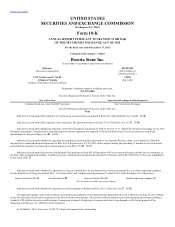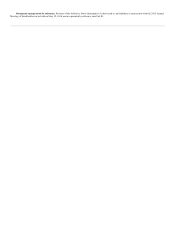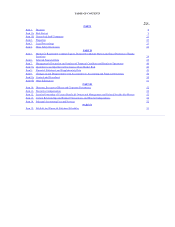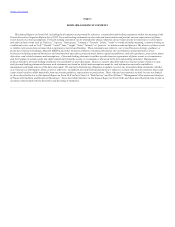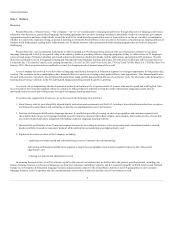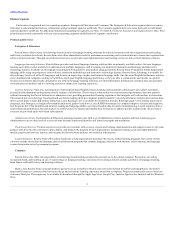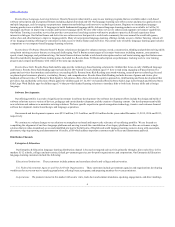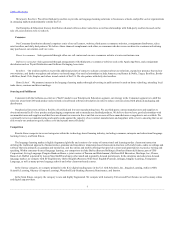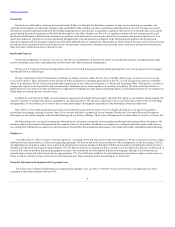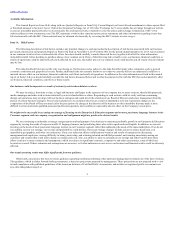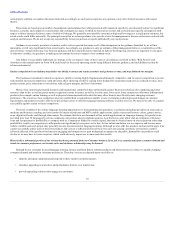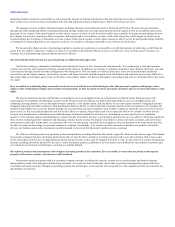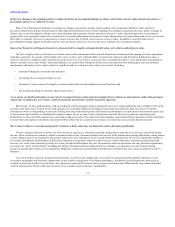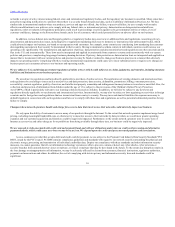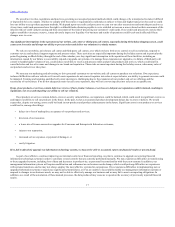Rosetta Stone 2015 Annual Report Download - page 8
Download and view the complete annual report
Please find page 8 of the 2015 Rosetta Stone annual report below. You can navigate through the pages in the report by either clicking on the pages listed below, or by using the keyword search tool below to find specific information within the annual report.
Table of Contents
We utilize third-party resellers to provide our language-learning solutions to businesses, schools, and public-sector organizations
in emerging markets predominantly outside the U.S.
Our Enterprise & Education literacy distribution channel utilizes a direct sales force as well as relationships with third-party resellers focused on the
sale of Lexia solutions to K-12 schools.
:
Our Consumer distribution channel comprises a mix of our call centers, websites, third party e-commerce websites, consignment distributors, select
retail resellers, and daily deal partners. We believe these channels complement each other, as consumers who have seen our direct-to-consumer advertising
may purchase at our retailers, and vice versa.
Sales generated through either our call centers and on our e-commerce website at www.rosettastone.com.
Sales generated through arrangements with third-party e-commerce websites such as the Apple App Store, and consignment
distributors such as Wynit Distribution and Software Packaging Associates.
Our retailers enable us to provide additional points of contact to educate consumers about our solutions, expand our presence beyond our
own websites, and further strengthen and enhance our brand image. Our retail relationships include Amazon.com, Barnes & Noble, Target, Best Buy, Books-
a-Million, Sam's Club, Staples, and others in and outside of the U.S. We also partner with daily deal resellers.
We promote interest in the language-learning market through advertising in publications focused on home schooling, attending local
trade shows, seminars and direct mailings.
Consistent with the Software-as-a-Service ("SaaS") model in our Enterprise & Education segment, our strategy in the Consumer segment is to shift the
sales mix away from CD-based product sales toward a cloud-based software subscription in order to reduce costs associated with physical packaging and
distribution.
Our physical inventory utilizes a flexible, diversified and low-cost manufacturing base. We use third-party contract manufacturers and suppliers to
obtain substantially all of our product and packaging components and to manufacture finished products. We believe that we have good relationships with
our manufacturers and suppliers and that there are alternative sources in the event that one or more of these manufacturers or suppliers is not available. We
continually review our manufacturing and supply needs against the capacity of our contract manufacturers and suppliers with a view to ensuring that we are
able to meet our production goals, reduce costs and operate more efficiently.
Rosetta Stone competes in several categories within the technology-based learning industry, including consumer, enterprise and educational language
learning, literacy, and brain fitness.
The language-learning market is highly fragmented globally and consists of a variety of instructional and learning modes: classroom instruction
utilizing the traditional approach of memorization, grammar and translation; immersion-based classroom instruction; self-study books, audio recordings and
software that rely primarily on grammar and translation; and free online and mobile offerings that provide content and opportunities to practice writing and
speaking. Within consumer-focused language learning, our competitors include Berlitz (Benesse Holdings), Pimsleur (Simon & Schuster, part of CBS
Corporation), Living Language (Penguin Random House, a joint venture of Pearson and Bertelsmann), McGraw-Hill Education, Duolingo, Inc., Fluenz,
Busuu Ltd., Babbel (operated by Lesson Nine GmbH) and many other small and regionally-focused participants. In the enterprise and education-focused
language market, we compete with EF Englishtown, Global English (Pearson), Wall Street English (Pearson), inlingua, Imagine Learning, Transparent
Language, as well as many private language schools and other classroom-based courses.
In the literacy category, we compete primarily in the K-12 digital reading space in the U.S. with Scholastic, Inc., Imagine Learning, Achieve3000,
Scientific Learning, Odyssey (Compass Learning), Waterford Early Reading (Pearson), Renaissance, and Istation.
In the brain fitness category, the category is new and highly fragmented. We compete with Lumosity, Elevate and Posit Science as well as many online
and digital app providers.
7

